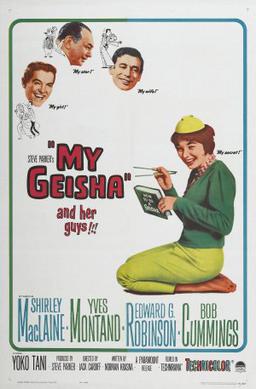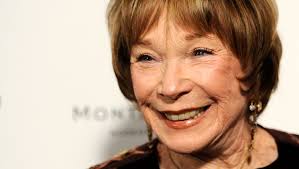
Although like most female humans Noel Streatfeild’s Ballet Shoes was part of my upbringing I would not say that I’ve ever been a real balletomane and this film must work better for those who are. Because even though it’s ostensibly about the relationship between an ageing prima ballerina and her former rival, now a housewife and mother to an upcoming star, there’s an awful lot of performance. A lot. Arthur Laurents’ screenplay was based more or less on the friendship between dancers Isabel Mirrow Brown and Nora Kaye (who was a co-producer with Laurents and director Herbert Ross, who was married to Kaye. The three had a complex personal/sexual relationship.) Leslie Browne – Brown’s real-life daughter by fellow dancer Kelly Kingman Brown – plays Emilia, the teenage dancer who’s talent-spotted by The Company when they come to town in Oklahoma City, reuniting Emma (Anne Bancroft as the fictionalised incarnation of Nora Kaye) with DeeDee (Shirley MacLaine, as the fictionalised Isabel Mirrow). DeeDee’s memories of her life as a successful dancer and giving it all up when becoming pregnant by fellow dancer Wayne (Tom Skerritt), now her husband and partner in a dance school, start churning. When she accompanies Emilia, Emma’s god daughter, to NYC, to spend the summer and realise her dream, she strays from her marriage, is shocked by her ambitious daughter’s affair with the male lead Yuri (Mikhail Baryshnikov) and eventually has it all out with lifelong rival Emma over whether she lost the lead in Anna Karenina years ago due to her pregnancy: and she wonders, Was she ever really any good? It’s a question that has haunted her for nearly two decades. The fact that their confrontation ends in a cat fight was a point of contention among critics. However as funny as that scene is – and it winds up being highly comic – it is an emotionally and dramatically logical conclusion to a relationship between women constrained by fiercely deprived physical experiences and discipline: there have been major psychological consequences to choosing these lives. Finally they can break free and tell people who they really are (up to a pointe…) And as Emilia’s star rises, Emma’s falls, and DeeDee comes to terms with the reality of her own decisions. Baryshnikov’s real-life lover Gelsey Kirkland had been offered the role of Emilia but she was being treated for drug addiction at the time, which is how Browne ended up playing a version of herself. There is a narrative thread about male dancers and homosexuality in the film and why DeeDee might have married Wayne but Yuri is like a cockerel in a hen house. A terrific work about women, marriage and career and there’s great stuff about the business of running a company and all the bitchiness one expects from a backstage movie. But there’s so much ballet!!! It shares the record for the most nominations for an Academy Award without a win. Bancroft and MacLaine are really marvellous and hit all the notes, but I wonder how this would have been if the producer’s first choice – for whichever of the lead roles she wanted – had been accepted by Princess Grace of Monaco. Wow.


























































































